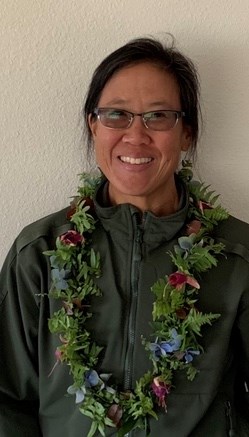Last updated: March 8, 2022
Article
Women in Landscape-Scale Conservation: Denise Louie

How did you get started working in landscape-scale conservation?
My first park as a Student Trainee Biologist in 1993 was at Big Bend National Park on the Texas-Mexico border. This experience highlighted the benefits and logic of working across boundaries on larger landscape scales with common conservation issues and seamless flora and fauna that know no boundaries. Black bears, for example, once extirpated from this area of Texas, reintroduced themselves from the sky islands in Mexico to re-populate the Chisos Mountains in the park. Across the river in Mexico are 2 sizeable protected areas that differ a bit in that they also include people living and caring for those lands within. Examples of collaborative work in the early 1990s included biologist exchanges between countries, invasive tamarisk control along waterways, and wildland firefighter training and deployment. It was really exciting and inspiring in those days when only a tiny river separated the countries and there was freedom to cross back and forth working with our Mexican counterparts.What does the term connected conservation mean to you?
We think of conservation not in siloes rather reaching outwards beyond constructed boundaries to find common ground and partnerships to amplify conservation capacity and effectiveness.

Tell us about a project that you have worked on that you are especially proud of.
At Pinnacles National Park we had the opportunity to build relationships with the original inhabitants of the area in conjunction with new lands added to the park that included intact expanses of deergrass and white root sedge. We worked together at the beginning stages of planning processes and in turn, gained friendships and mutual trust in the work. Collaborative work included research in re-introducing cultural burning to the new lands and cooperative habitat restoration using contemporary and traditional ecological knowledge approaches. We worked within existing NPS law and policy that was somewhat limited for non-federally recognized Tribes. We expanded reach through partnership with nearby Bureau of Land Management lands that had a more progressive policy in land access and use for traditional practitioners and for a generation re-learning cultural practices after a century or so of disconnection.If you could collaborate with anyone or any organization who would it be?
I would continue the relationship building and inclusion of perspectives and values of Indigenous partners - and encourage this lens in the natural resources management field.
